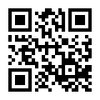文章基本信息
- 标题:The Beginning of a Beloved Community: Teaching and Learning within the Literacy Tradition of African American Women Writers
- 作者:Kelly Wissman
- 期刊名称:Women in Literacy and Life Assembly
- 出版年度:2008
- 卷号:16
- 出版社:Women in Literacy and Life Assembly
- 摘要:
Is there no context for our lives? No song, no literature, no poem full of vitamins, no history connected to experience that you can pass along to help us start strong? —Toni Morrison, 1993 Nobel Lecture in Literature, p. 27 For a little over one academic year I taught an elective course exploring poetry and photography with a group of young women of color in an urban public charter high school. Framing the development and research of this learning context were both the expressed desires of the students themselves for a different kind of learning space within their school and my own questions surrounding the possibilities of creating educational contexts supportive of young women enriched by the arts and poetry. Within this time of standardized and scripted curricula, what happens when we craft alternative in-school spaces to “invent what we desire” (Rich, 1993)? Within this time deemed post-feminist and post-racial, what happens if we take seriously that race and gender matter in how we live our lives and the artistic work we produce? What happens when students are invited to consider poetry as a possible venue for, in June Jordan’s words, “taking control of the language of your life” (Muller, 1995, p. 3)? If inquiry, as Lorri Neilsen (1998) contends, is a “conspiracy, a breathing together” (p. 262), then the kind of air we breathed in the class most often was the socially charged, socially grounded, and socially visionary air of contemporary African American women writers. Their words created the context; their words became inspiration for the students’ own words. In this article, I explore what happened when I brought into the classroom writers who in richly varied ways engaged the creative process toward the production of what Dionne Brand (1995) calls “relevant, charged, politically conscious, memorable” (p. 167) expression. The Course Starting from the premise that we are all artists and poets, the students and I pursued critical encounters with autobiographical writing and photography both in and out of school. As an intentionally collaborative group, we engaged with the works of socially conscious writers and image-makers; used reflective processes to discuss issues of gender, race, and social injustice; took photographs and wrote poetry to explore lives and identities; and shared this work with each other and with others through conference presentations, exhibitions, and a submission to an on-line education journal. Sixteen students participated in the course; some students participated in all three trimesters it was offered, while others for only one. The majority of the students self-identified as African American. Three students identified respectively as Puerto Rican, multi-racial, and Black/Grenadian. One white student participated before needing to withdraw for academic reasons. The students ranged in age from 14-16. The course met three times a week for 60 minutes a session. While photography was an important component of the class, I focus in this article on the reading and writing of poetry within this setting..
- 关键词:African American Women;Teaching and Learning;Community;Literacy;Tradition;United States
